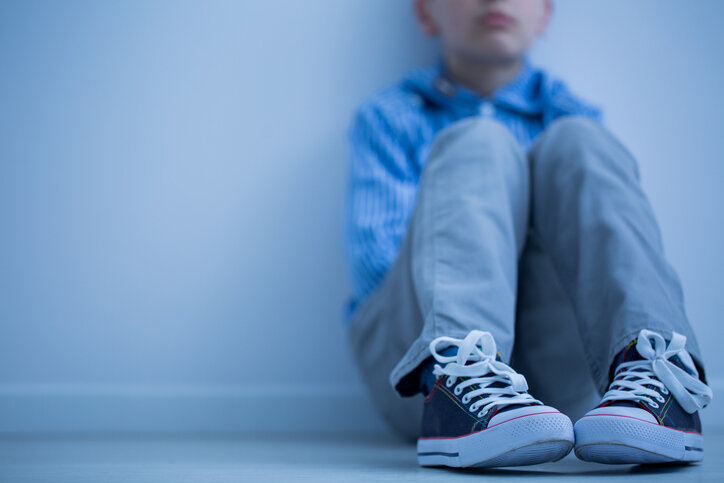“This message is addressed to all those who, like me, suffer or have suffered some harassment at work or school. It is a social problem that should not be normalized.”
One of the main motivations for writing this article is the experience I lived while I was a Ph.D. student. For two years, I was subjected to psychological harassment by some graduate classmates. Derived from the personal interest that I have in this topic and my training as a researcher, I put myself to the task of doing a review of the research on the subject of psychological harassment in the classroom to alert society of a real problem to which we are all exposed. I intend to prevent and avoid such events from being normalized in the common spaces dedicated to education.
For those who are not familiar with this term, psychological harassment is a form of emotional abuse that is defined as a set of intentional, hostile behaviors frequently performed by the abuser for a prolonged time to achieve violating a person or group of persons in some way (Aquino and Lamertz, 2004; Doyle, 2001; Hirigoyen, 2001; Lewis and Orford, 2005; Leymann, 1996; Quine, 1999; Salin, 2003; Soares, 2002, cited in Justicia et al., 2006).
“A person suffering from psychological harassment shows symptoms such as gradual loss of self-esteem and self-confidence and develops a negative perception of their personal abilities.”
Psychological harassment weakens a person’s spirit, damages their self-esteem, generates fear and insecurity, and makes them question their reputation and their academic or professional performance; the psychological aspect is significantly affected. (Martínez-Otero Pérez, 2017). Additionally, disorders related to post-traumatic stress, generalized anxiety, and thoughts of suicide, irritability, hypervigilance, and mistrust, paranoia, depression, and somatization have also been identified (Acosta-Fernández et al., 2017).
Two essential elements define a harassment situation Parés (2006); on the one hand, the so-called “acts of marginalization,” which is the behavior shown by the victim when he is isolated from the social group to which he belongs; and on the other hand, the group element of moral harassment, where other individuals are participants in this type of phenomenon, both directly and indirectly.
Specifically, in terms of professional activity, Parés defined the concept of mobbing as psychological harassment at work that aims to destroy the mental stability of a human being by discrediting him or her (Pares, 2005). In concrete terms, mobbing is practiced as group accostment in such a way that the “stigmatized” victim cannot defend himself, nor can he speak, or if he does, the harassers intend that his word has no value. So, in these cases, the helplessness of the person victimized comes from the passivity of the witnesses who allow the gradual devaluation of another human being, even though they participate in the process indirectly.
“I believe that the greatest danger that harassment and bullying pose to the mental health and emotional stability of a person lies in isolation.”
Considering my case, I identify with the contributions of the researchers, as mentioned above. I relate these clearly to situations I lived in the classroom. For example, in the class sessions in which I participated, I suffered different forms of harassment, usually in terms of comments aimed to show I lacked knowledge in the topics covered, mocking my proposals, as well as being critical of my style or the way I expressed myself. All of this also happened in social media, where memes were shared that suggested a lack of capacity on my part on specific topics.
During that time, one of the most sensitive issues I had to face was a slanderous situation in which my professional ethics were questioned by the suggestion that one of my works had been plagiarized. This situation caused me different negative emotions such as annoyance, intimidation to express my ideas, unease, and anxiety, and this even affected the way I related to my family.
Unfortunately, in Mexico, harassment-related cases show alarming statistics. According to the results of the PISA 2015 survey on the wellbeing of students, 20% of students mentioned being bullied at least a few times a month, and 13% of the student community reported having been made fun of by their peers. This situation has negative effects also in terms of school performance, as schools with high levels of bullying show a lower average performance compared to those with low levels of abuse (OCDE, 2017). Similarly, the ECOPRED 2014 survey of the INEGI estimated that 32.2% of 12-18 year-olds were victims of school harassment or bullying, a total of around 1.36 million students.
The statistics related to cyberbullying found by the INEGI survey given in 2017 to people between the ages of 12 and 59 show that 16.8% reported having experienced some cyber-harassment. Around 46.4% said that the subject from whom they received some harassment are people they barely knew or knew only by eyesight; 32.7% identified close friends as sources of harassment, and 22.8% said classmates or co-workers were the harassers (INEGI, 2017).
From my experience, I can identify three main actors participate in a harassment situation:
-
The person who harasses: The person who systematically engages in activities of psychological harassment through comments made with the intent to bully, ridicule, slander, or create false rumors.
-
Indirect participants: The individuals who were part of the harassment without necessarily being direct perpetrators.
-
Affected subjects (victims): The people who were the object of bullying that had the goal to violate the victim’s moral integrity.
Within this frame of reference, it is imperative to develop appropriate protocols for the detection, attention to, and monitoring of psychological harassment, where educational organizations actively participate in eradicating these types of practices through tutorial action at all educational levels. This should
be considered even at the Doctoral level, where academic tutoring is a requirement proposed by the Mexican National Council of Science and Technology for monitoring the development of each doctoral candidate.
Therefore, this message is addressed to all those people who, like me, suffer or have suffered some form of harassment in their workplace or study center. It is a problem that definitely should not be normalized, so I consider it is necessary to denounce that no one has the right to harass another, in any way, at any time, in no place, and under no circumstances.
After living this experience, I believe that the greatest danger that harassment and bullying pose to the mental health and emotional stability of a person lies in isolation. A person who suffers from harassment feels out of context without any possibility of integrating into a particular group. This is bad because the human being is social by nature. Therefore, if someone finds himself in a situation similar to the one that I lived, I would recommend that he or she seeks emotional support from a loved one so that they feel they can express themselves without fear of being judged. That is the first step.
Along these lines, specialists recommend performing an intervention that aims to decrease the level of anxiety in the victim and improve their mental state by identifying and recognizing the problem to channel anger and resentment into positive energy (a technique known as emotional deactivation). They also recommend seeking the strengthening of self-confidence, self-esteem, and assertiveness skills so that the victimized person can healthily resume their personal and professional development.
On the part of the institutions, it is fundamental to design and maintain appropriate protocols so that a person suffering from bullying and harassment can seek help with the confidence that professional, serious and objective follow-up will be given to the problem. It requires a joint effort between individuals and the institutions to improve the work or school environment through well-established processes.
Despite everything that I lived, one factor that I rescue as “positive” is the decision to channel the feelings of uneasiness and disturbance by focusing on my research projects and, as a consequence, have higher scientific productivity during my training as a researcher, which culminates in 2021.
About the author
Saúl Alfonso Esparza Rodríguez (saul.aer@gmail.com) is a Ph.D. student in Administration at the Universidad Michoacana de San Nicolás de Hidalgo. He is a researcher in Social Sciences and author of the book, “The Science of the SMEs and the Scientific Method of Competitiveness.”
References
Acosta-Fernández, M. et al. (2017). “Condiciones psicosociales, violencia y salud mental en docentes de medicina y enfermería,” Barranquilla (Col.), 33(3), pp. 344–354. Available at: https://search.proquest.com/docview/1984765584/2DD9F615AA954FDCPQ/217?accountid=43592.
Ayala, A. D. V. (2016). El acoso psicológico o mobbing en instituciones de educación superior. México D.F., Available at: https://optisnte.mx/wp-content/uploads/2016/09/request-9.pdf
Cadavid, A., Toro, V., y Alzate, L. (2017). ¿Cuáles son las causas y consecuencias del acoso laboral o mobbing? Revista electrónica psyconex, 8(13), 1-10. Available at: https://dialnet.unirioja.es/servlet/articulo?codigo=4352437
INEGI (2014). “Encuesta de Cohesión Social para la Prevención de la Violencia y la Delincuencia (ECOPRED) 2014.” Available at: https://www.inegi.org.mx/contenidos/programas/ecopred/2014/doc/ecopred14_presentacion_ejecutiva.pdf
INEGI (2017). “Módulo sobre ciberacoso 2017”. Ciudad de México. pp: 1-24. Available at https://www.inegi.org.mx/contenidos/saladeprensa/boletines/2019/EstSociodemo/MOCIBA-2017.pdf
Justicia F., Benítez, J., y Fernández de Haro, E. (2006). Caracterización del acoso psicológico en el contexto universitario. Revista de Psicología del Trabajo y de las Organizaciones, 22(3),293-308.[fecha de Consulta 6 de Febrero de 2020]. ISSN: 1576-5962. Available at: https://www.redalyc.org/articulo.oa?id=2313/231317121004
Martínez-Otero Pérez, V. (2017) ‘Acoso y Ciberacoso en una muestra de alumnos de educación secundaria, Profesorado. Revista de currículum y formaciòn del profesorado., 21. Available at: http://www.redalyc.org/pdf/567/56752489014.pdf
OCDE (2016) PISA 2015 Results (Volume I), Organización para la Cooperación y el Desarrollo Económicos, [OCDE] nota País. México. doi: 10.1787/9789264266490-en.
Parés, M. (2005). ” Mobbing: Conociendo al grupo acosador desde la antropología.” Conferencia Magistral. XIII Coloquio Internacional de Antropología Física “Juan Comas.” Campeche-México. Available at: https://suportmututic.files.wordpress.com/2014/11/conociendo-al-grupo-acosador.pdf
Parés, M. (2006). “La Detección del falso Mobbing” Congreso Latinoamericano de Psicología Jurídica y Forense. On-Line. Acreditación. Publicado en el Boletín Electrónico de Psicología Jurídica (online) (réf 3-8- 06). Available at: http://www2.izt.uam.mx/amet/vcongreso/webamet/indicedemesa/ponencias/Mesa%2019/Paresm19.pdf
This article from Observatory of the Institute for the Future of Education may be shared under the terms of the license CC BY-NC-SA 4.0 
)
)











)
Sofía García-Bullé
Sofía García-Bullé
Sofía García-Bullé